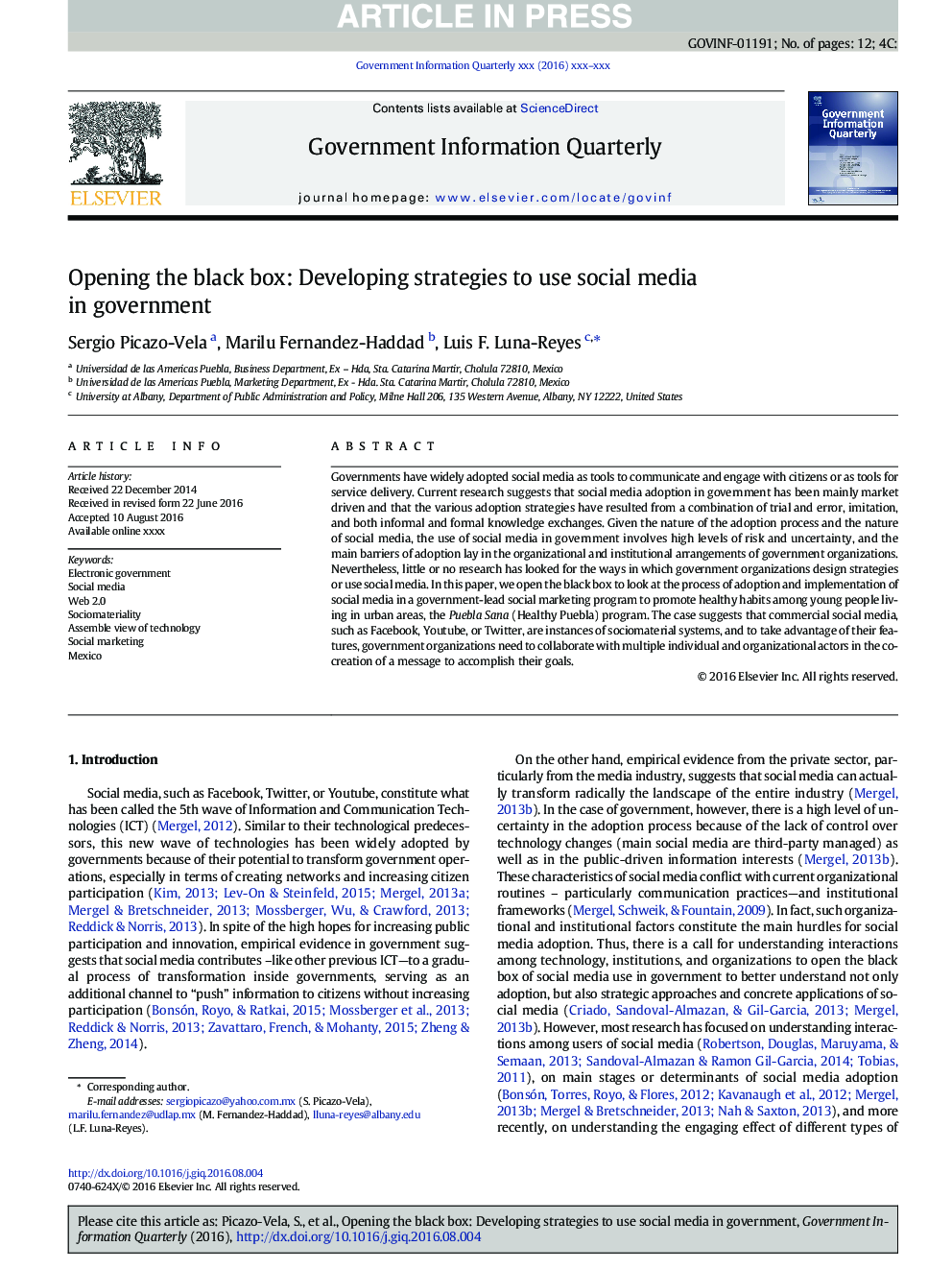| Article ID | Journal | Published Year | Pages | File Type |
|---|---|---|---|---|
| 5110684 | Government Information Quarterly | 2016 | 12 Pages |
Abstract
Governments have widely adopted social media as tools to communicate and engage with citizens or as tools for service delivery. Current research suggests that social media adoption in government has been mainly market driven and that the various adoption strategies have resulted from a combination of trial and error, imitation, and both informal and formal knowledge exchanges. Given the nature of the adoption process and the nature of social media, the use of social media in government involves high levels of risk and uncertainty, and the main barriers of adoption lay in the organizational and institutional arrangements of government organizations. Nevertheless, little or no research has looked for the ways in which government organizations design strategies or use social media. In this paper, we open the black box to look at the process of adoption and implementation of social media in a government-lead social marketing program to promote healthy habits among young people living in urban areas, the Puebla Sana (Healthy Puebla) program. The case suggests that commercial social media, such as Facebook, Youtube, or Twitter, are instances of sociomaterial systems, and to take advantage of their features, government organizations need to collaborate with multiple individual and organizational actors in the co-creation of a message to accomplish their goals.
Related Topics
Social Sciences and Humanities
Business, Management and Accounting
Business, Management and Accounting (General)
Authors
Sergio Picazo-Vela, Marilu Fernandez-Haddad, Luis F. Luna-Reyes,
